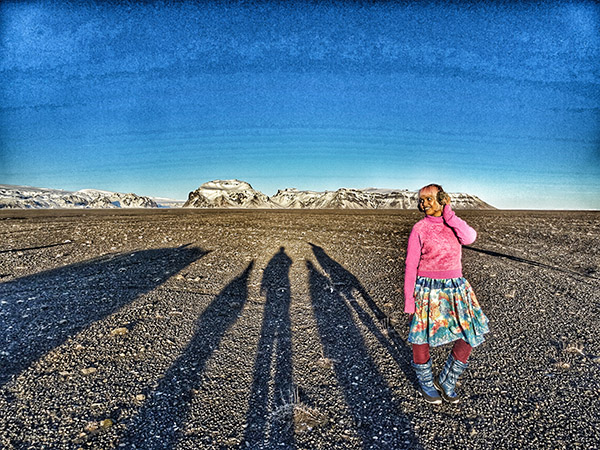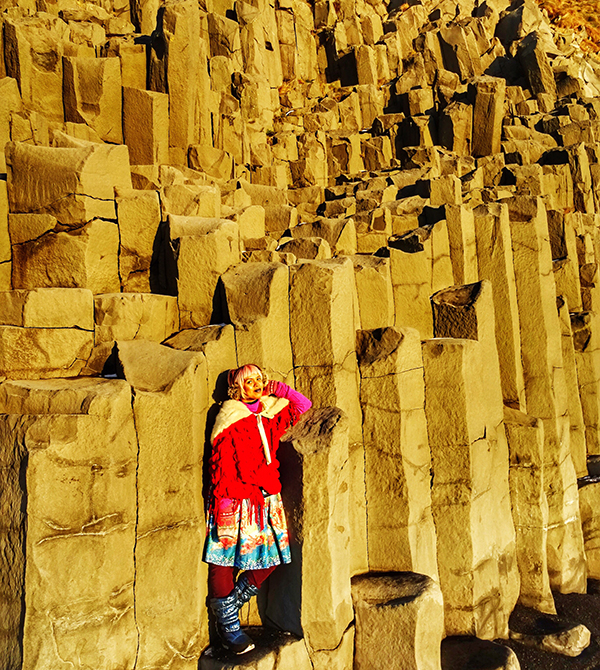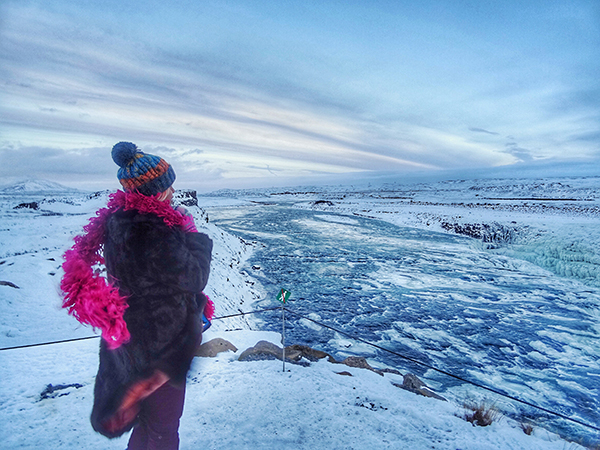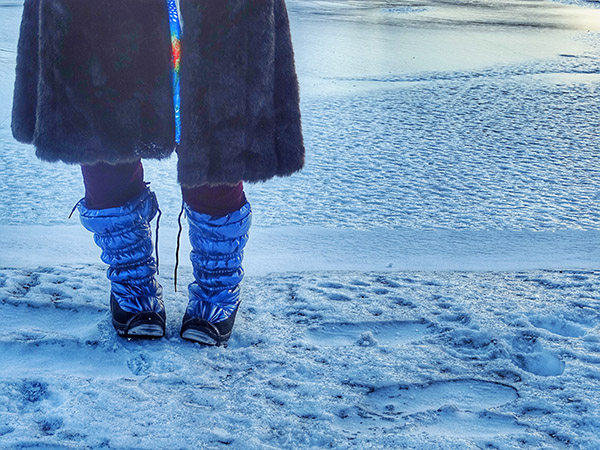
At a travelblogger’s conference earlier this year I was horrified to learn that I am not a proper travel blogger. If I was, I would have written a dozen ‘packing advice’ posts by now. It’s the done thing: guaranteed to get you views. But hey I’m not fickle* and I’m not interested in packing posts. I can’t think of anything more dull to read than an article on ‘go to this shop and buy this’, just to wear once on holiday. Having that that, I did meet a lady whose sole ‘packing advice’ blog got so popular she now employs over 30 people.
So *this is not strictly a packing post, I merely added the word ‘pack’ in the title to test out if there is any ‘clickbait’ reaction. The main reason I am writing is a couple of weeks back the UK came to a standstill after ‘some’ snowfall. So I’m tying in ‘snow style tips’ with packing; this doubling up makes me feel less ashamed about writing a ‘packing post.’ (Seriously who are these hundreds and thousands of people around the world who read blogs about ‘packing’? Surely there’s none in my friendship network?)
On to the topic in question. I used to be so freaked out by snow. As a Londoner with little exposure to the white stuff I didn’t get how on earth you walk in it. One time on a ski trip in Slovenia the snow got to me so much I cried on the slopes. Much of my lack of confidence was that I just felt so uncomfortable. My hired ski suit was so un-me and I was handed big bulky boots that I’d never have chosen to wear myself. Leaving any fashion decision in someone else’s hands is a massive risk.
Last month, I faced my snow fears again by spending a few days in Iceland, only this time I was determined not to get upset by abiding by convention and wearing dull clothes. Instead I decided to pack as myself. The only addition I made to my normal wardrobe was thermals. When you’ve got thermals on under your clothes you can get away with wearing anything. Maybe that’s obvious but if it is, I’d like to know what the excuse is for there being so much blandness being worn at this time of year? (Minus the Christmas jumper which is as adventurous as most British people get.)
So here’s what I discovered about what to wear when it snows, or if you’re in a snowy place.
Hiking books? Whatever. You just need some decent crampons

I did actually look into walking and hiking boots but any that were remotely pleasing on the eye were painfully expensive. I mean I only wanted boots for a three day trip, there was no way I was going to invest is a pricey pair and justify it by telling myself I’d wear them again. So I decided on the best possible option, buy the cheapest but nicest pair I could find that would do the job then add on crampons, a portable teeth-like device you place on your shoe which aids walking on snow and ice. They’re pretty cheap and discreet and make walking in snow a breeze. For the boots themselves I bought a pair from Ebay for £10 and they totally did the trick. I only needed the crampons on a couple of occasions when the snow walking turned to snow trekking.
Dress up

See I’m the kind of girl that wears dresses pretty much every day. I don’t own a pair of jeans and I hate trousers, I find them annoyingly restricting. So I consulted my dress collection and picked out the ones which had long sleeves and came below the knee. Then I teamed them with two layers of thermals underneath and the result was I felt happy wearing a dress and I didn’t get cold. Win.
Colour

I’ve come across a couple of travel bloggers who have declared it’s winter, so they will be wearing dark colours. Eh? Fine if you want to blend into the grey skies but there’s no law to say colour is just for sunshine. Truth is colour brightens up your mood and those around you. In a winter landscape, colour increases in vibrancy and as many would describe it, makes your photos ‘pop.’ (Yeah, I don’t know what that means either.) You don’t need to go out like a rainbow, think about a key colourful piece – like my red poncho – every time I’ve ever worn it it gets compliments. In fact it’s a travel staple. I take it everywhere, even warm destinations because it acts as an aeroplane blanket and shelter from the draft of air con.
Accessorise appropriately

To be fair, I don’t normally put the words ‘appropriate’ and ‘fashion together’ but it does alarm me when it’s snowing, people complain and they aren’t even wearing a hat, scarf or gloves. When you’re wrapped up warm for winter your jewellery like necklaces and bangles may get covered up by your layers, but those key items that will be seen are a chance to enjoy your personal style. There’s a scarf type for everyone. And hats… we lose most body heat through our heads yet still there are folk that don’t wear hats. Don’t feel self-conscious, just get one that’s warm and snug – same for gloves. Part fingerless are my favourite because they allow you to do so much more than mittens do despite the fact visually I prefer a mit.
Get cosy in your coat

Your coat is your shield. Your armour. You could be wearing all the thermals in the world but your coat is what will keep the winds out. Yes they are a pain to travel with and mine is so huge it actually took up the same space as hand luggage but lugging it around was so worth it, especially in the waterfall areas of Iceland where the conditions are literally biting cold.

So…should it snow again where you are, or if you’re off to somewhere snowy this Christmas or New Year don’t feel compelled to wrap up and look drab… snug can be stylish too.
Fancy going to Iceland. I was invited by and stayed at Hotel Ranga in Southern Iceland, which is an incredible spot in which to witness the Northern Lights as they have a policy that they give you a wake up call in your room at whatever time they come out whether that’s midnight or 4am, you won’t miss them!
Image credits: Craft and Travel
















 So many options!
So many options!





 My group dyeing their scarves
My group dyeing their scarves




